This story centers on a project that World Hope International is hoping to launch on La Gonâve, Haiti, as our latest market-driven, community-led, enterprise solution. It highlights the experience of residents in trying to access clean water and the impact that this project will have on island life.
Whether we are addressing health and nutrition, anti-trafficking or gender-based violence, education, emergency relief, water
The Challenge
The island of La Gonâve sits just off the northwestern coast of Haiti. Its rugged 37 miles take hours to traverse and the town of Anse-à-Galets is the largest settlement on the island.
Following the devastating 2010 earthquake on the Haitian mainland, the population of Anse-à-Galets exploded with new residents seeking refuge and new beginnings. Between the population’s explosion and the long dry seasons, the town’s strategically built water infrastructure was rapidly outgrown and over-tapped.
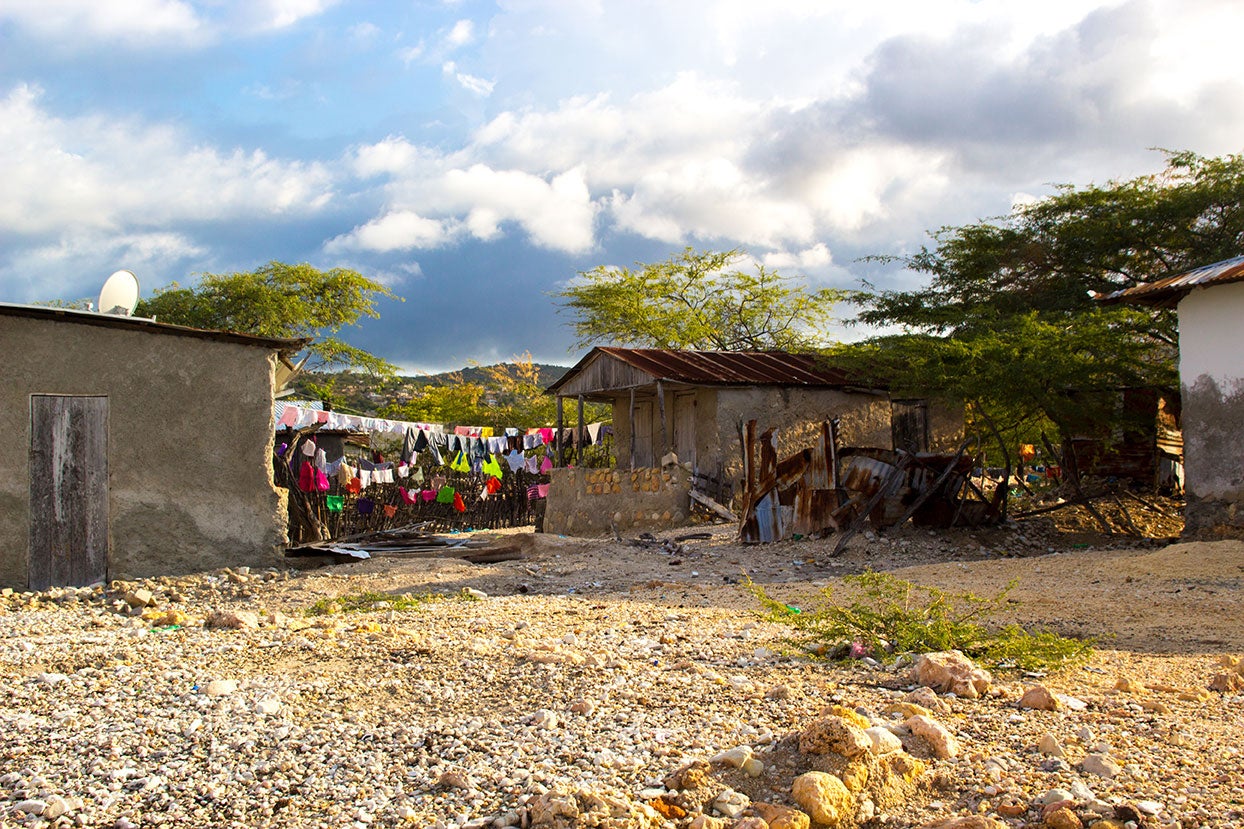
Houses and shelters sprang up in the ocean’s flood plane following the 2010 earthquake, creating a whole sub-community at the edge of Anse-à-Galets known simply as “The
On a dry land burning under the fierce Caribbean sun, the residents of Anse-à-Galets found themselves surrounded on all sides by water they cannot safely drink.
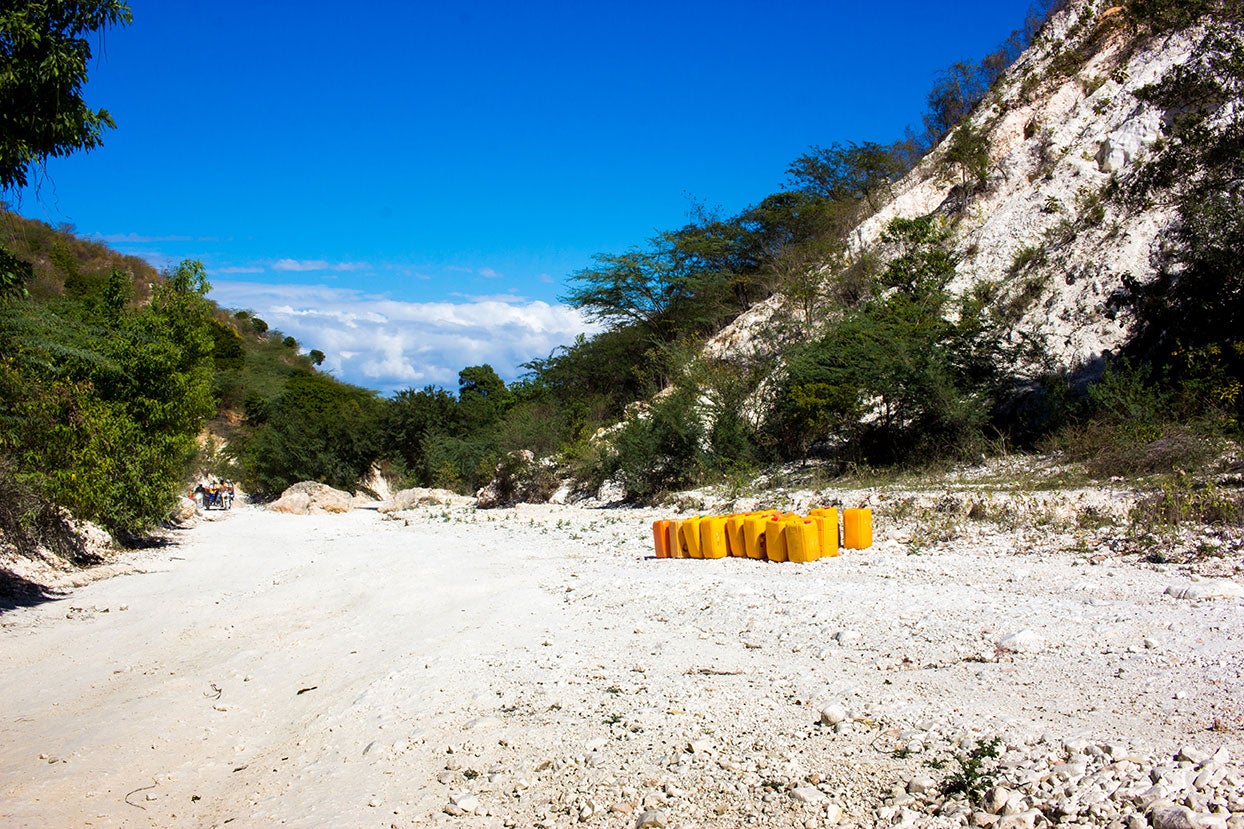
Containers filled with water from one of the springs in the hills outside Anse-à-Galets wait by the road to be hauled into town by
Our team visited La Gonâve and went around the town and surrounding communities to meet with residents, witness their daily lives, and learn about their experiences with water—for better or worse.
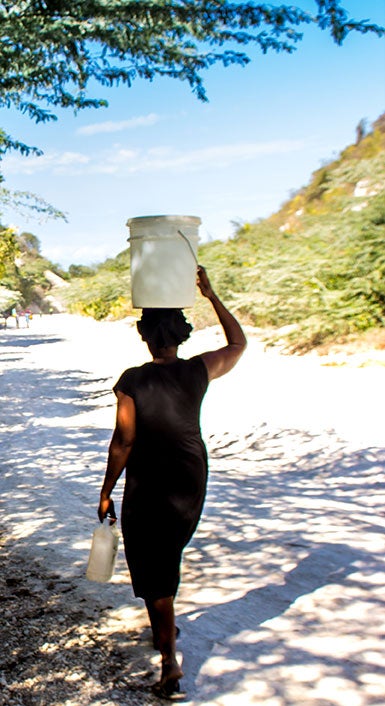
This woman carries water from the hillside spring down the long, hot road–a trip that takes 20 minutes to traverse on a motorcycle.
“A lot of people here on La Gonâve don’t know what clean or good water is. They just look for water and drink what they can find. Any water at all is better than nothing.” ~Lefils
Scarcity
Right now, the town of Anse-à-Galets gets its water primarily through 18 public fountains that were built in the
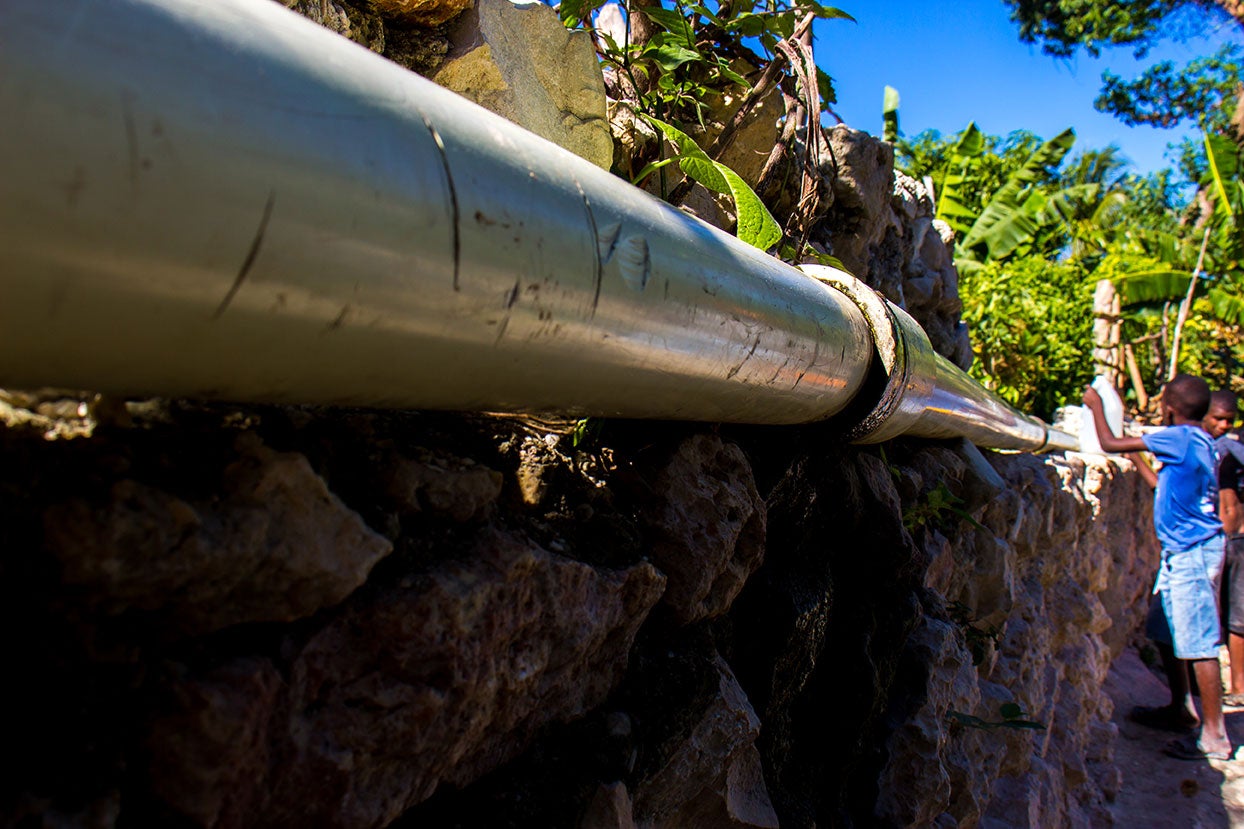
Water piping down to a public fountain at the far edge of town
The capacity of these fountains was built to satisfy a population of roughly 15,000, back in a time when Anse-à-Galets only had about 10,000 people living there. No one could foresee that in only a few short years, there would be nearly 52,000 people utilizing the system and far over-tapping the water.
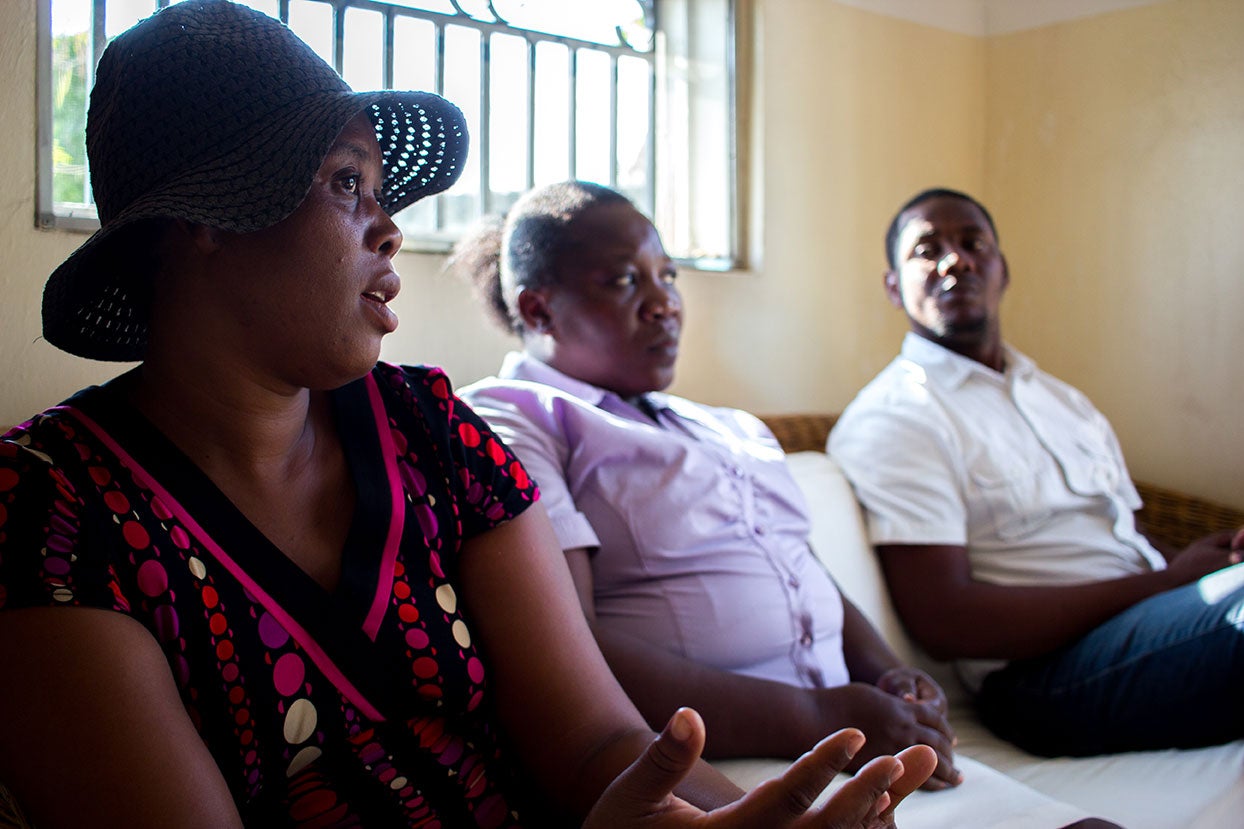
Celine, a resident of Anse-à-Galets, and Madame
“Sometimes some organizations, they come here and say we need water and they identify that. They build lots of wells, but the water is no good,” shares Madame
For a small town, Anse-à-Galets is riddled with over a hundred of these tragically useless wells, which were built without appropriate testing of the ground and groundwater. Thousands more of them waste away across the island. “The damage the poorly done wells inflict on the community is high; they are broken solutions that risk draining or contaminating the aquifers,” notes Robin Churchill, Director of West Indies Self Help (WISH) on La Gonâve
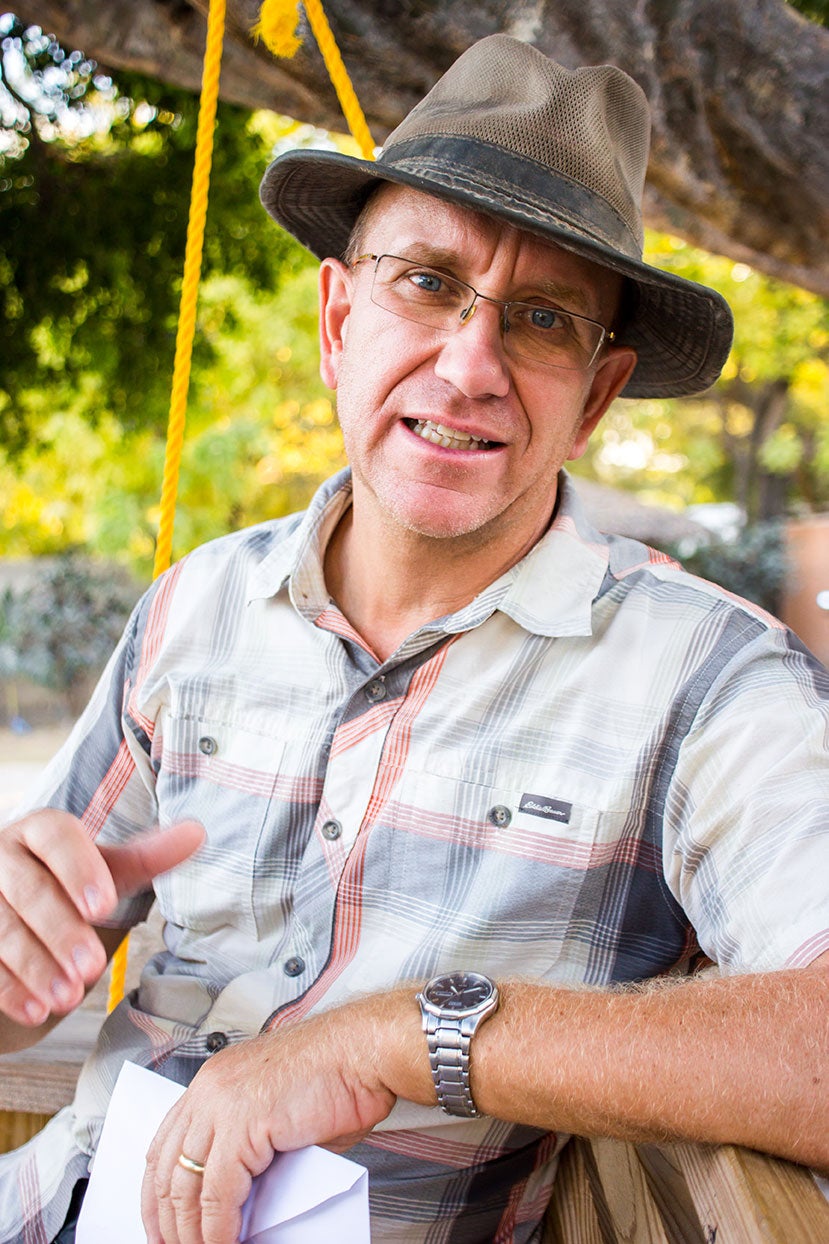
Robin reflecting on the attempts of organizations over the years to address the water situation on the island
Most residents on the island supplement the water they collect from the public fountains with barrels they leave outside to fill with rainwater.
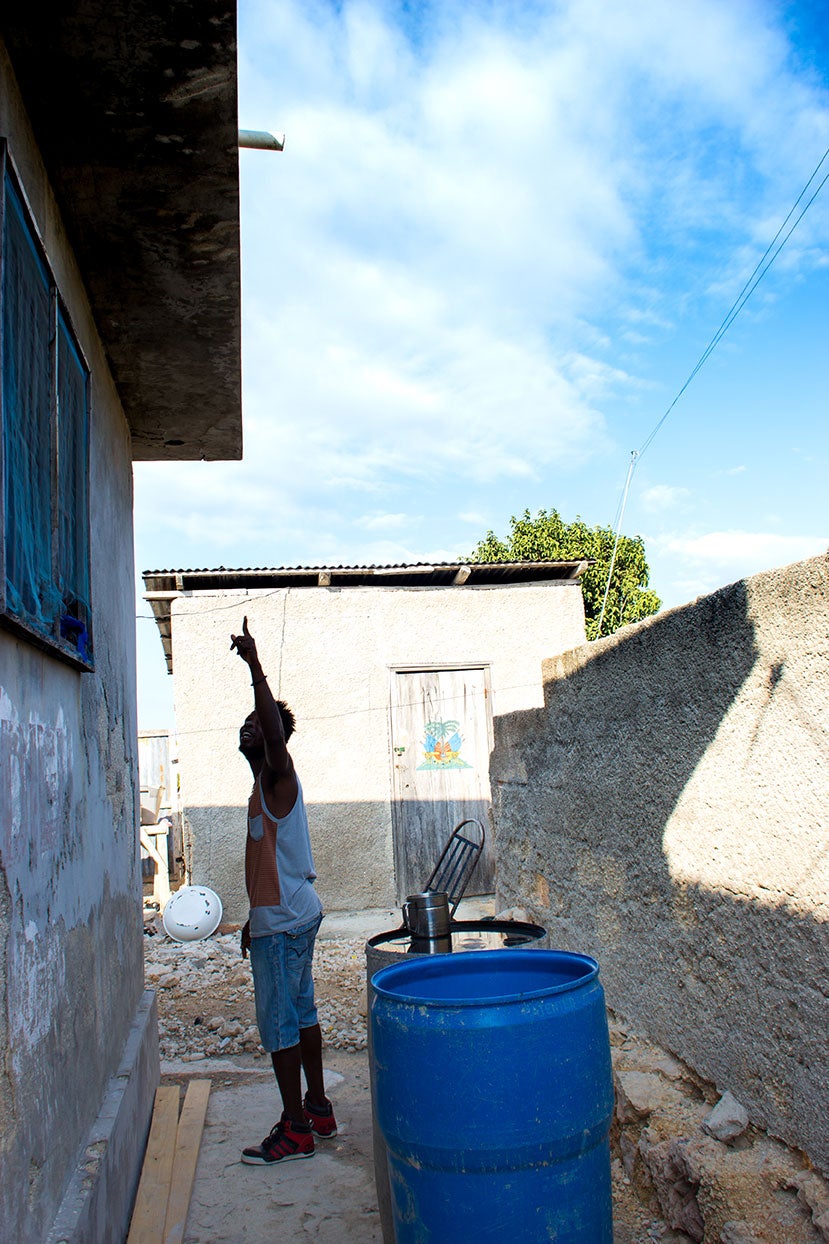
A neighbor of Celine shows us how they collect rain water into barrels to save
“Sometimes there are really big difficulties when there is no rain. The rain stops and the water goes down. Most people go the whole way up the mountain and still can’t get the water. It’s one system for the whole city. There is often no water.” ~Celine
“I understand water is indispensable in life. You think, when you can’t get good water, kids can’t cope. Our bodies can’t live without good water. We use water to drink, wash our clothes, our bodies, cook food. And we can’t do without it.” ~Madame
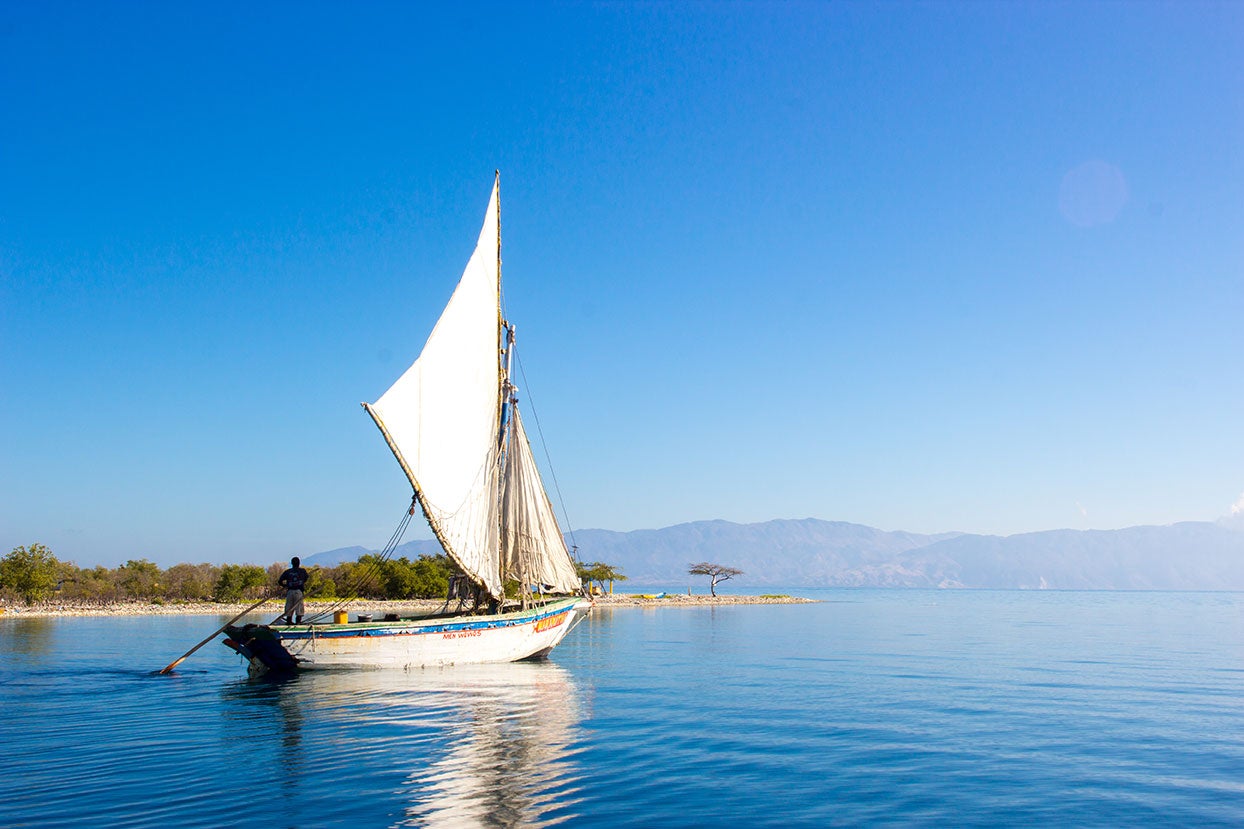
A small fishing boat off of La Gonâve
Jeanot first came to La Gonâve when he was 12. “When the earthquake happened, I was on a boat, working as a fisherman. Suddenly the boat lurched and we thought we hit a rock, but it wasn’t a rock. It was the earthquake,” he shares, shaking his head slightly. “When we got back, it was like an explosion in port. The dock fell into the sea and some people were dead there, a store crumbled. But my family, they were safe.”
“The town has a lot of people,” Jeanot, who now works as a night watchman in Anse-à-Galets, observes. “This time, the water is very slow to come, like a dry rain. And when the water is there, sometimes a lot of people are there waiting for it and they can’t get to it. So sometimes they go up into the mountains and cut the lines, break open the pipe.”
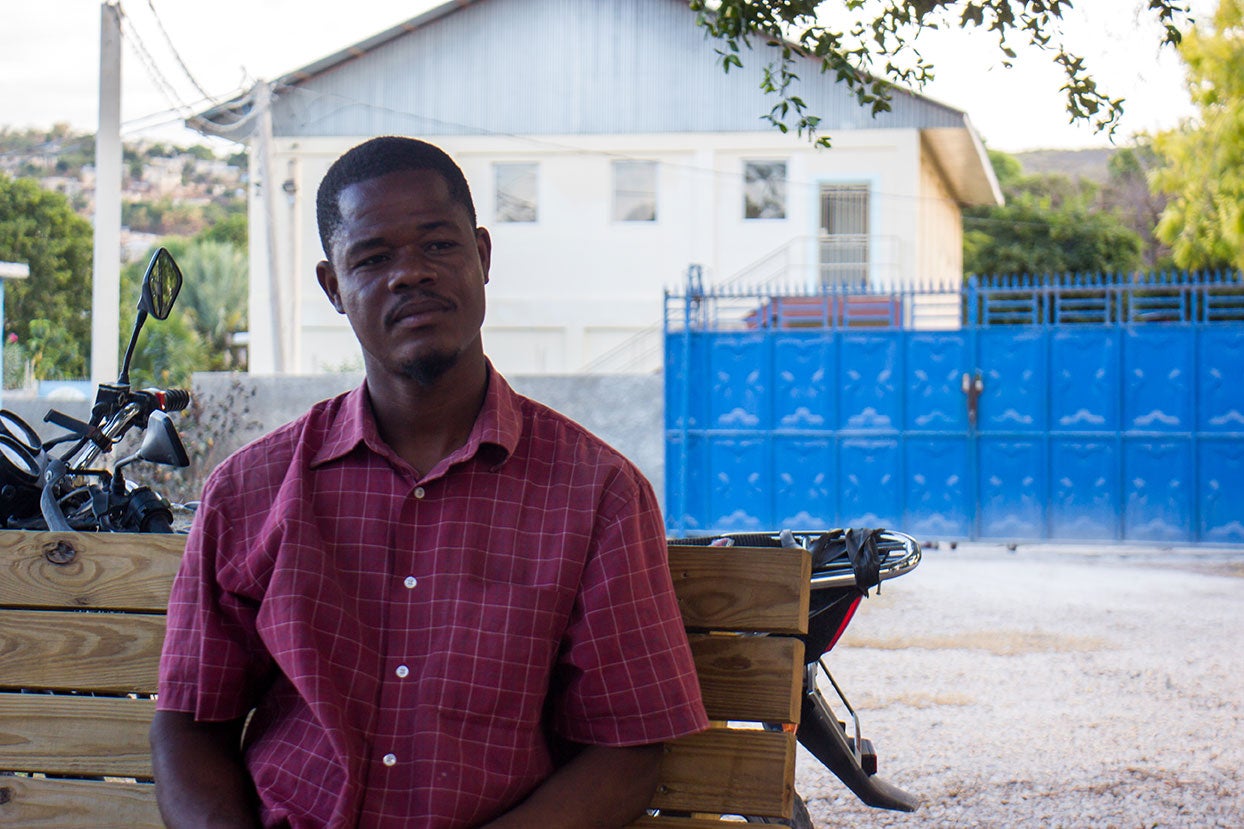
Jeanot, reflecting on the challenges of accessing water in Anse-à-Galets
“Some people have a private line or way of getting the water. They sell it by the bucket. They go and save water and then charge other people, people who don’t have water or can’t find any,” Jeanot continues.
“We can’t just move away. There is no good water, anywhere. If someone says to go where the water is, we say, we will let them be in a situation where they have to move just for water, and may there be somewhere they can go. This is what we have.” ~Madame Prinston
“It’s one thing in life you should get if you’re alive: good water.” ~Celine
Safety
Although the water that flows to the fountains in town is fresh and not brackish, it still needs to be purified for safety and contains a lot of minerals.
“It’s not safe to just drink. You have to boil the water and purify it with the chlorine,” Jeanot explains.
Residents have to acquire “water purification tablets” and then drop these into the water they find. It takes 10-15 minutes to clean the water and then it becomes safe to drink. Once purified, however, the water has an expiration date for drinking: it will only last for 2-3 days, after which it has gone bad.
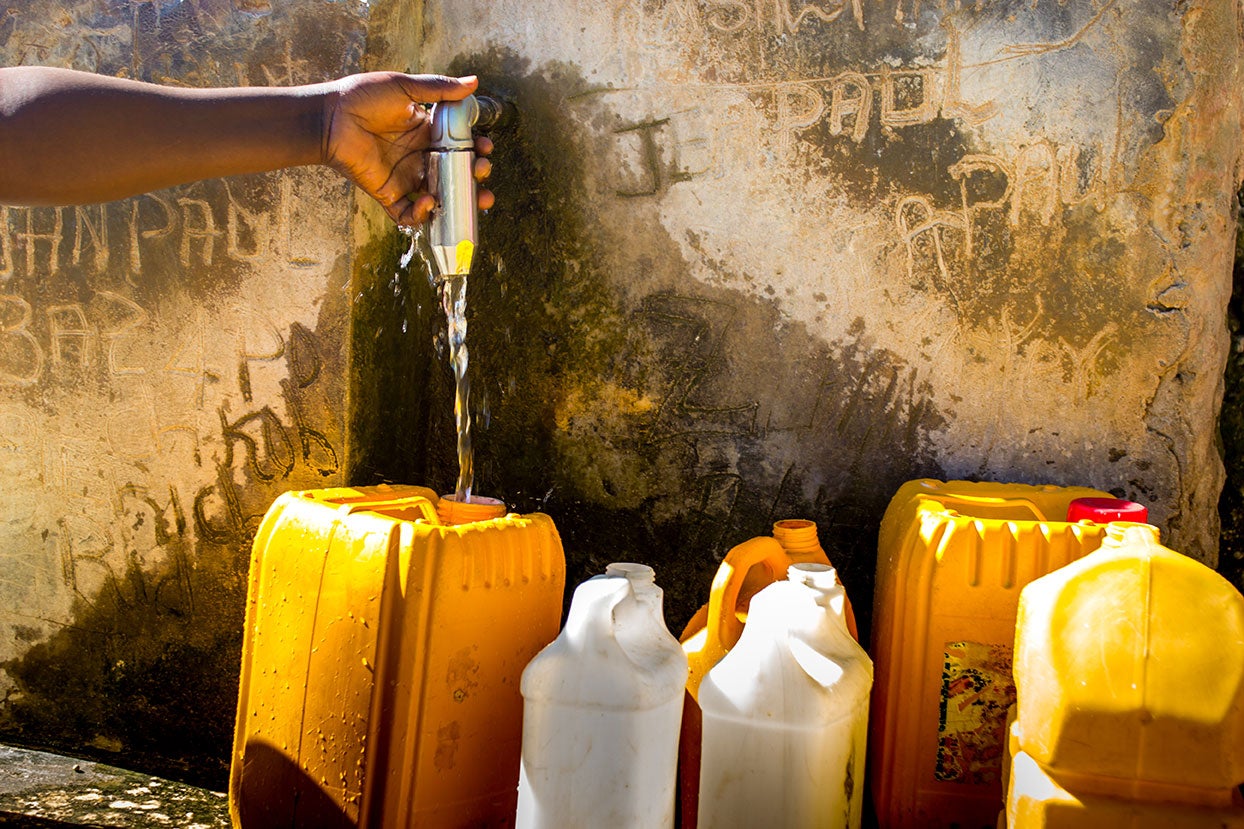
Water jugs being filled up at one of the fountains at the edge of town
“When you get
“Kids play. They go out and you don’t always know what they might
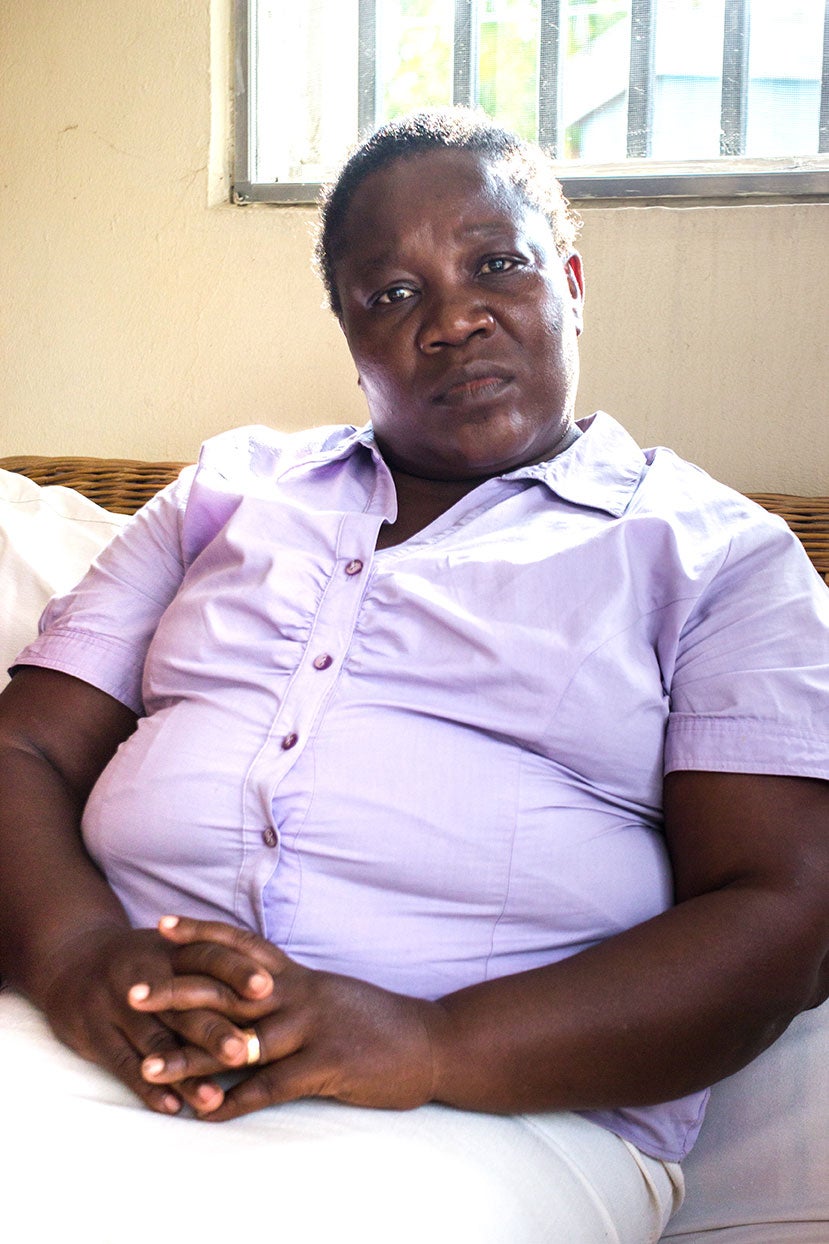
Madame
“I had this idea that if you could just build a water cistern that can save the water and have it when it’s dry, that would be good. Having ocean water be drinkable would help so many people.” ~Jeanot
“My children sometimes have belly pain and headaches. Sometimes they vomit and sometimes, diarrhea.” Madame
“My children have the same thing,” Celine adds, leaning forward. She has five children, the youngest of whom is only four years old. “I go often to the hospital. Most times they get better, but sometimes they are very sick.”
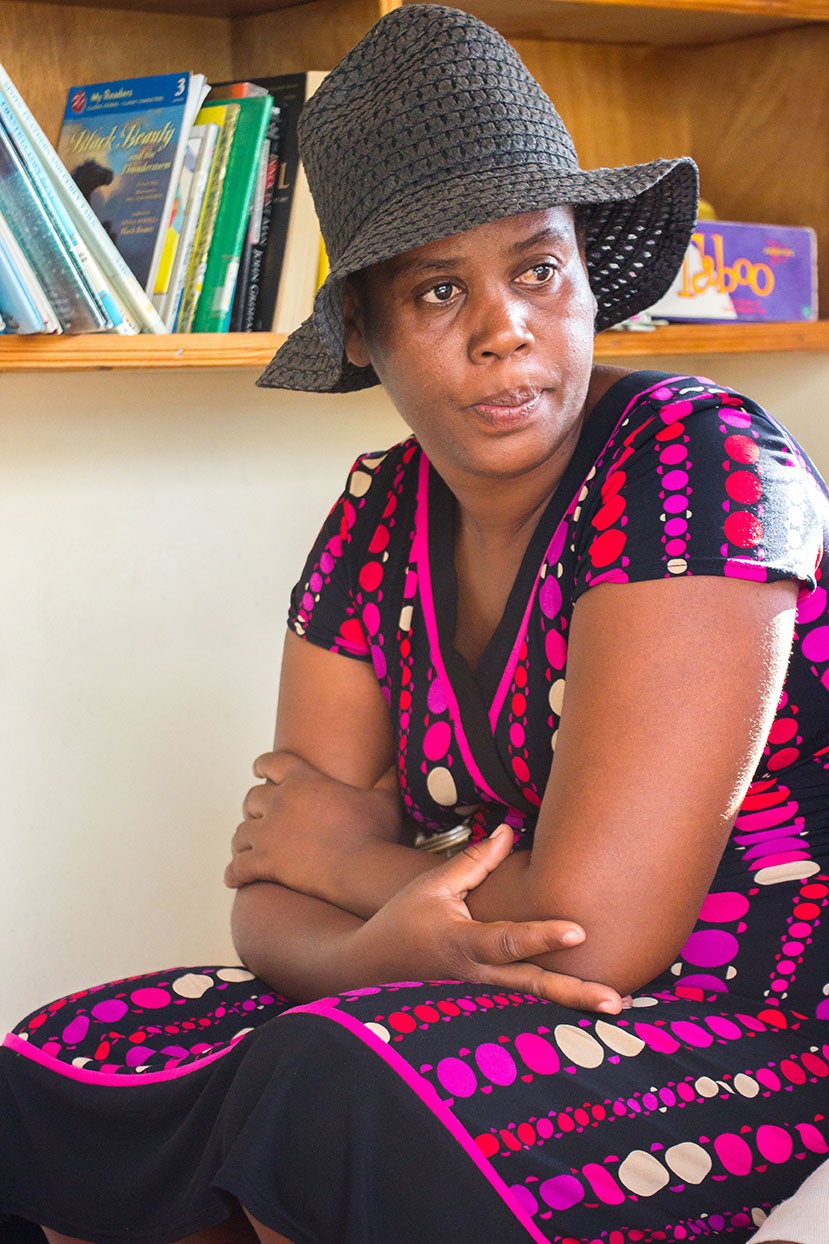
Celine, sharing about her children getting sick from water-borne illnesses
“My kids don’t get sick very often. In a month, one of the kids might only have diarrhea or pain two or three times,” Celine continues. Madame
“Yes, my children are only sick a few times every month. We take a lot of precautions,” she says.
“I have 3 boys and 2 girls and my job is helping them to go to school,” Jeanot shares. “I want them to learn, then go on to university. I want them to have
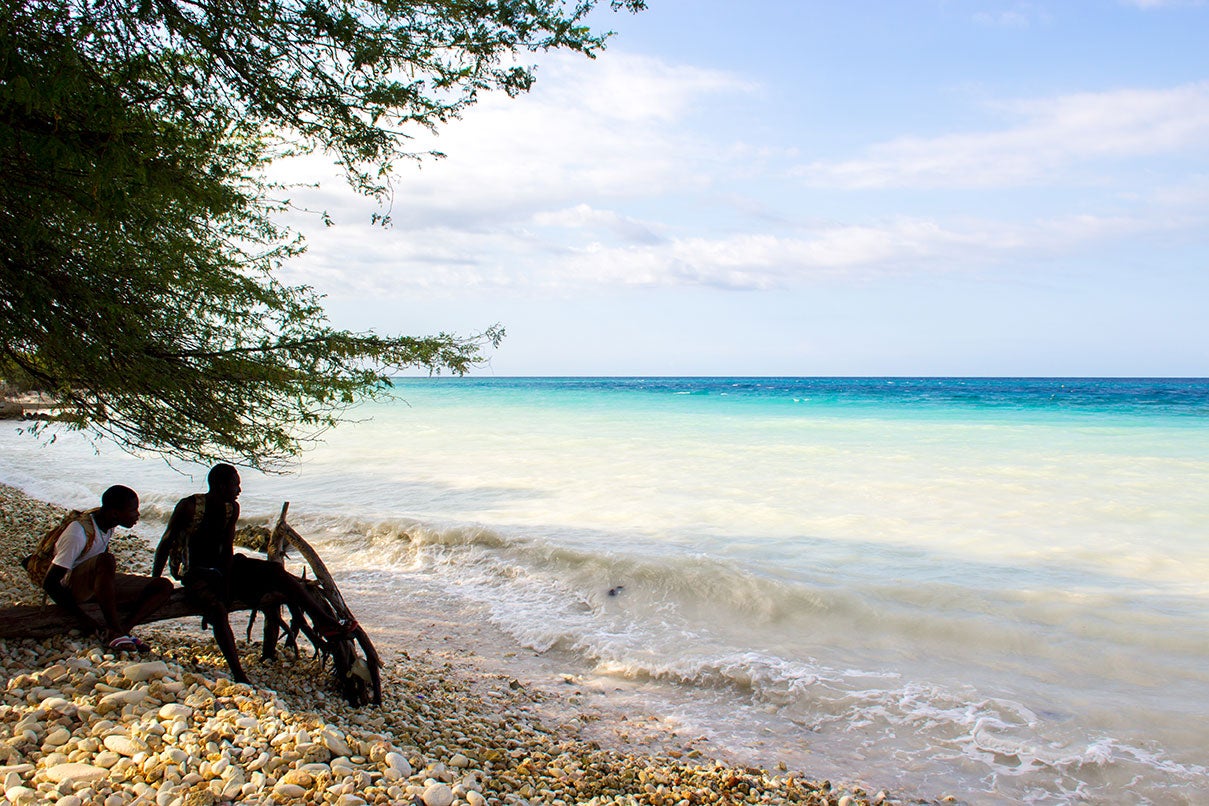
Teenaged boys sitting beside the oceanfront at community school, looking out
“Maybe we can prevent some of the waterborne illnesses.” ~Yvon Pierre
The Innovation
“Water is everywhere here,”
“I had this idea that if you could just build a water cistern that can save the water and have it when it’s dry, that would be good. Having ocean water be drinkable would help so many people.”
In fact, the community of Anse-à-Galets is hoping to collaborate with
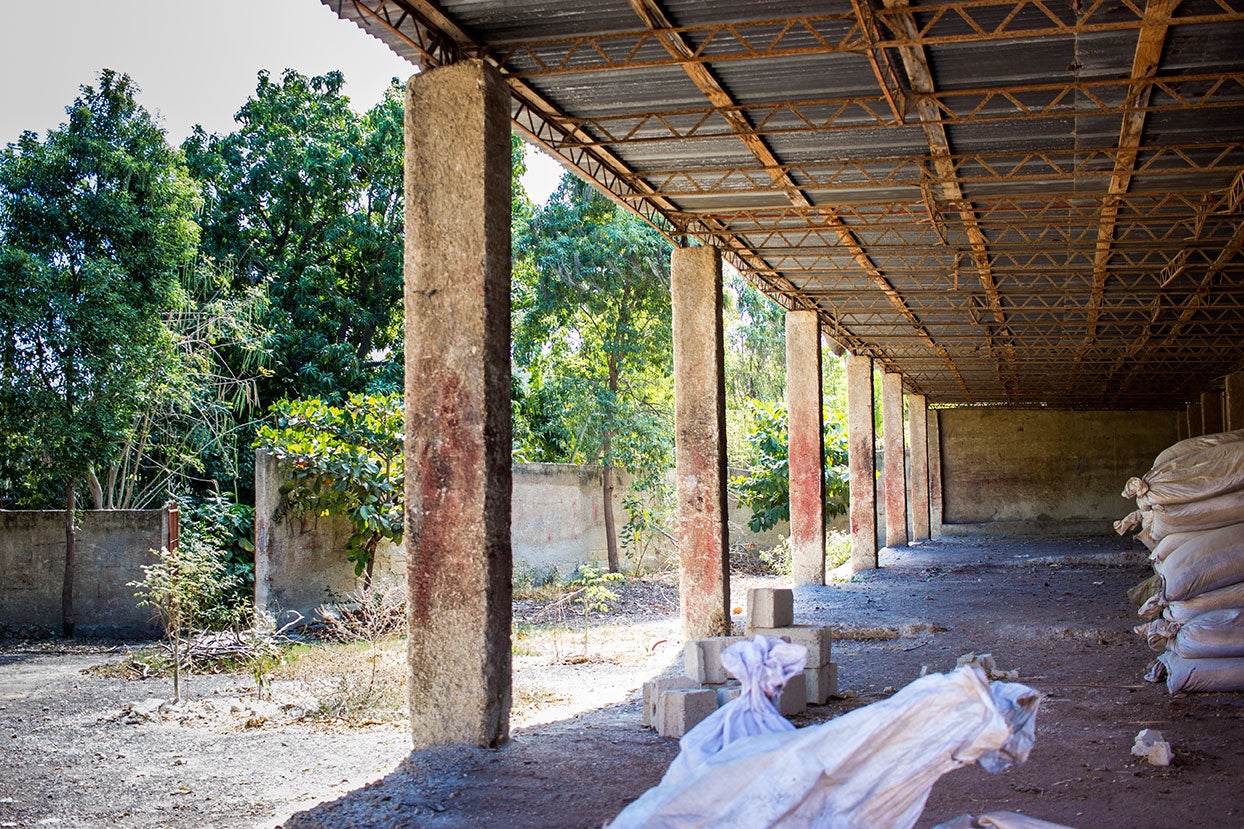
The site of the future solar-powered water desalination and treatment center
“It would be awesome to have a plant that desalinates and treats the water, that provided clean water to us,
The local hospital sees many children and adults alike admitted due to waterborne infections and diseases that would be easily preventable if a system like this existed.
“If we had something that could desalinate and treat the salty water here on the island, then we would always have clean water then because we would always have the sea,” Yvon Pierre, the Director of Human Resources at the local hospital commented. We just don’t have the means now to extract it. It’s a very important project.”
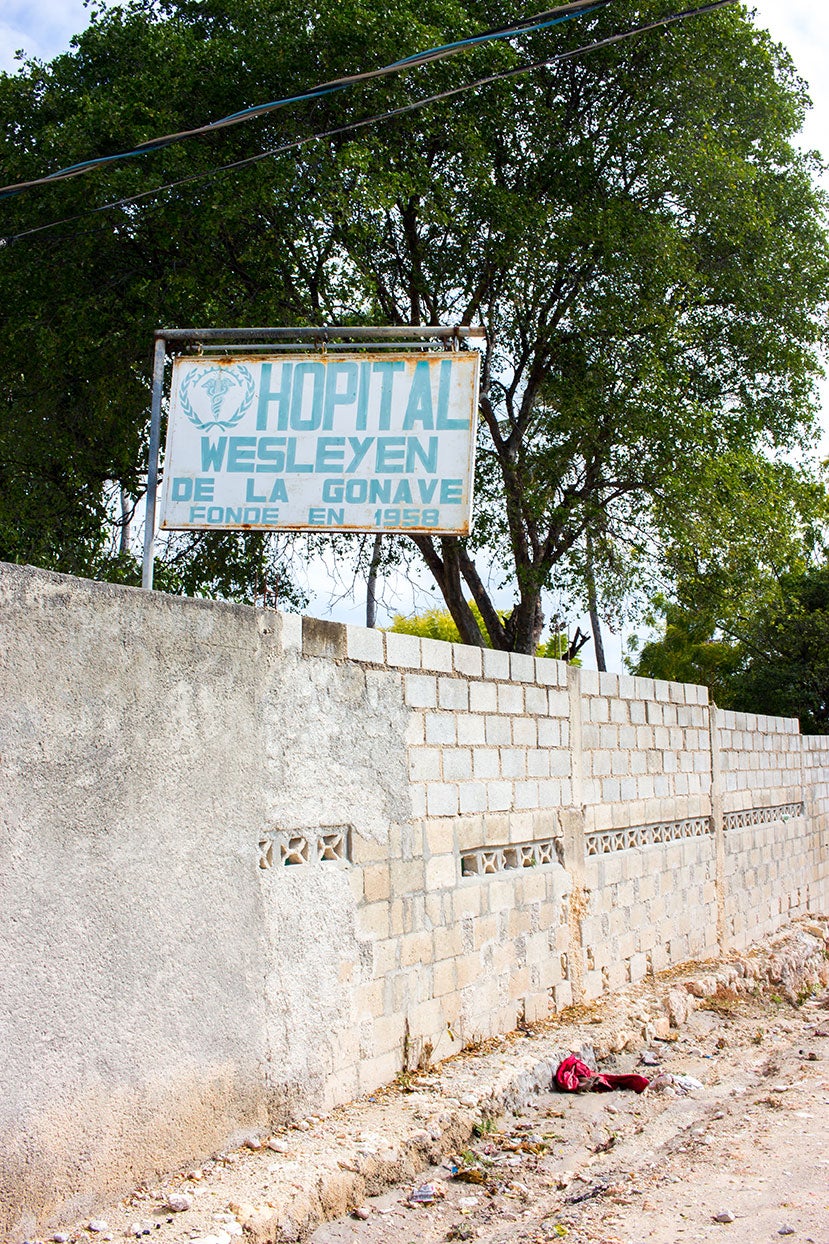
The local hospital would receive some of the excess water produced by the anticipated plant
The Impact
“My house is not close to the water system. Without rain, I have to go so far away,” Madame
“To go up the mountain to the spring, it takes me 15-20 minutes by motorcycle to get there,” Celine, who lives in town already, comments. “Sometimes even there you must wait. But I don’t have to walk that. Many people, they have to walk the whole way there—and sometimes, even there, you cannot get water.“
Madame
Having a center that utilizes solar power on the island to desalinize and treat the currently undrinkable and immeasurable amounts of salty water and turn it into clean, safe, accessible, and affordable water would make all the difference to the residents of Anse-à-Galets.
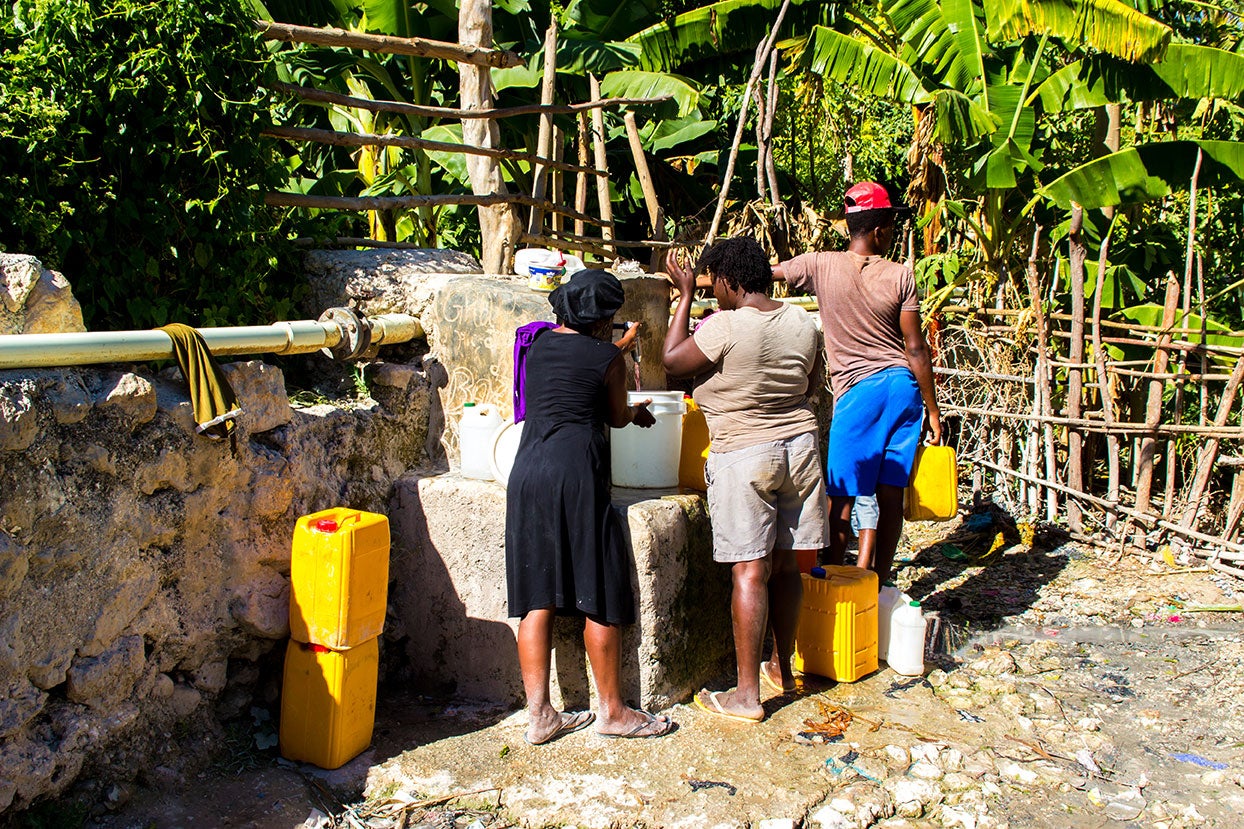
Residents of Anse-à-Galets gather water at the edge of town
“If we could get well water to drink, that would be very important. Water is important to
“If today, we can find people thinking of us and help us get good water, we would thank God,” Madame
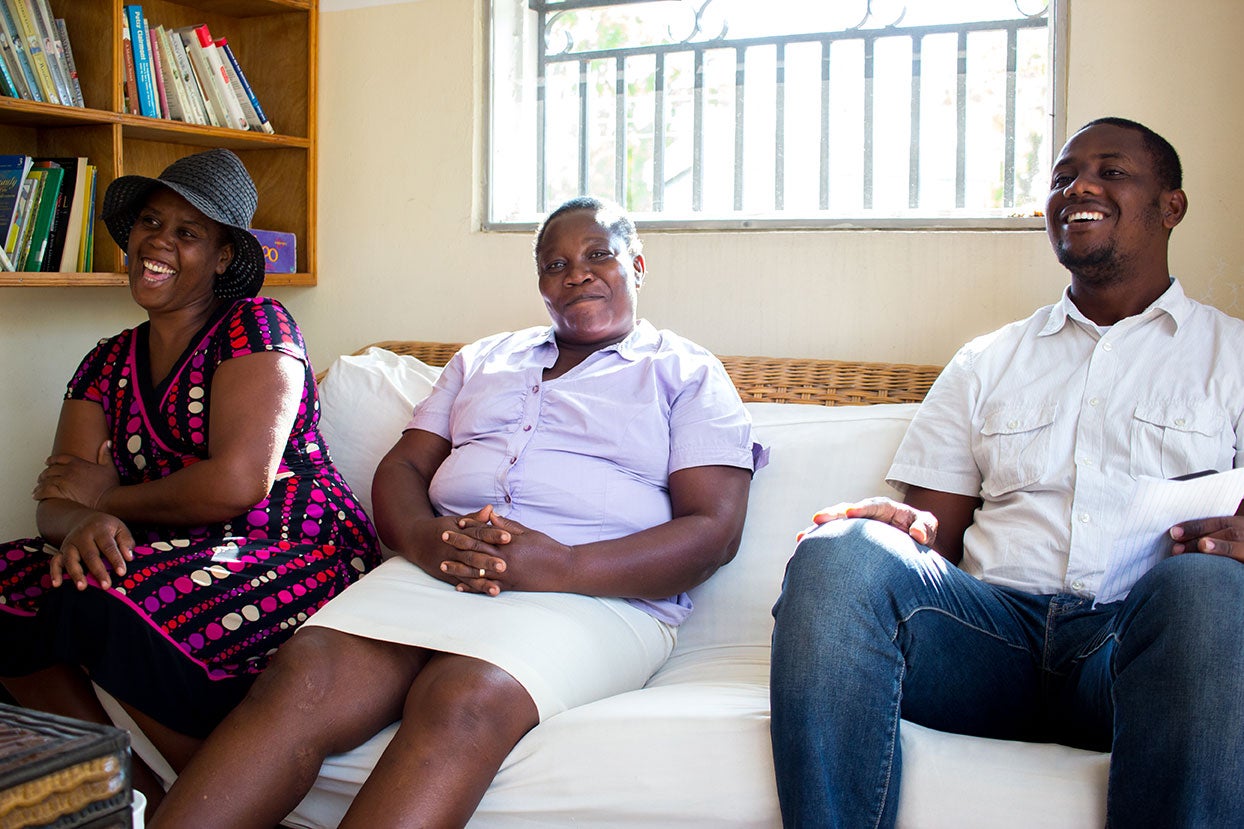
Celine, Madame
The anticipated solar-powered water desalination and treatment center will also include a training portion to empower Haitians living on La Gonâve and in Anse-à-Galets to take on the maintenance and management of the project, ensuring its sustainability, as well as a community training to help residents learn the importance of using clean water and the dangers of consuming unsanitary or brackish water. We are hoping to launch this center in April of 2019
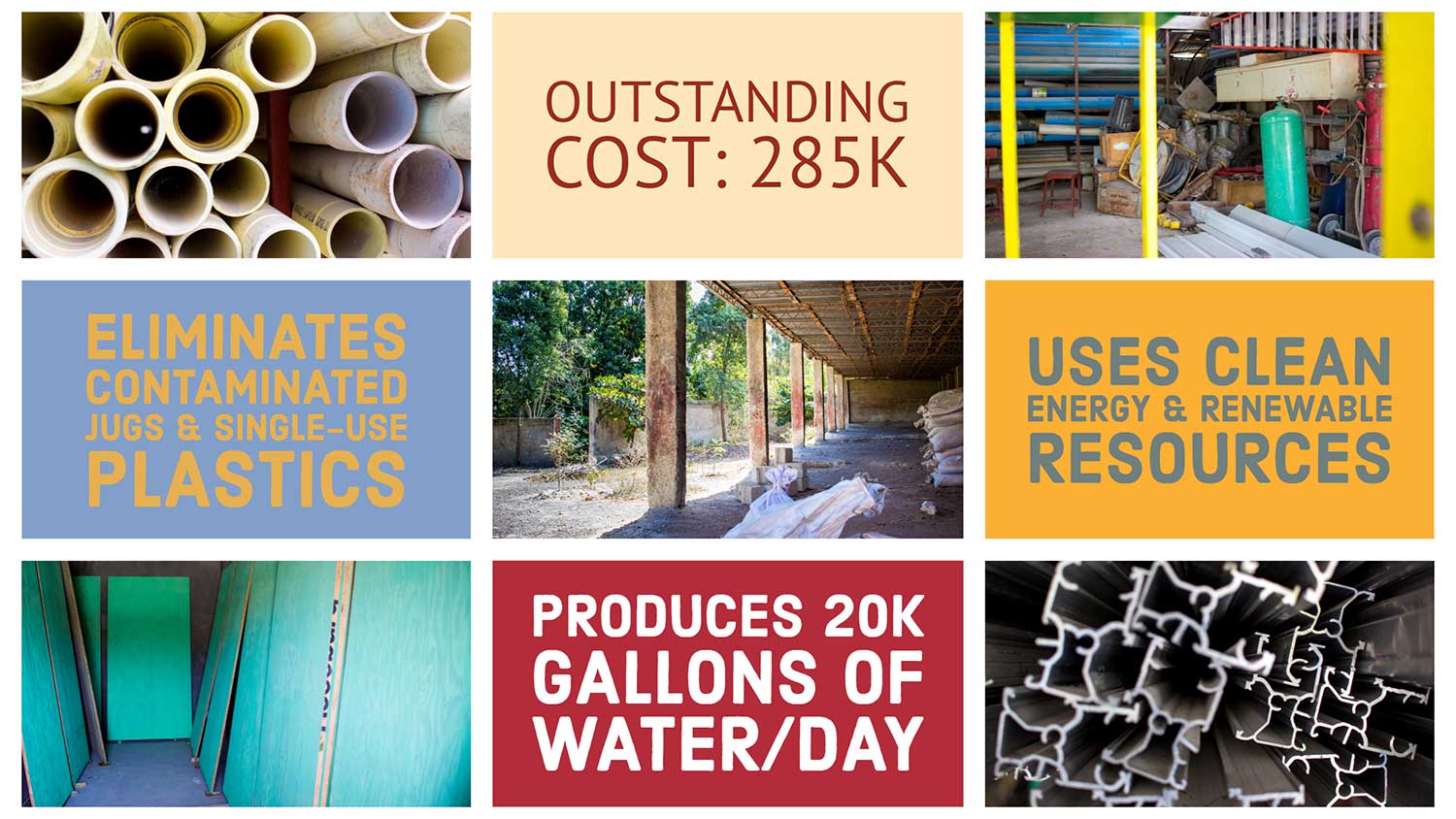
For more information about the project itself or supporting it, please contact Dan Irvine or Nancy Green. For media inquiries, please contact Heather Hill.
Credits:
Photographed and written by Heather Hill / World Hope International
